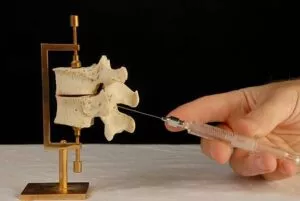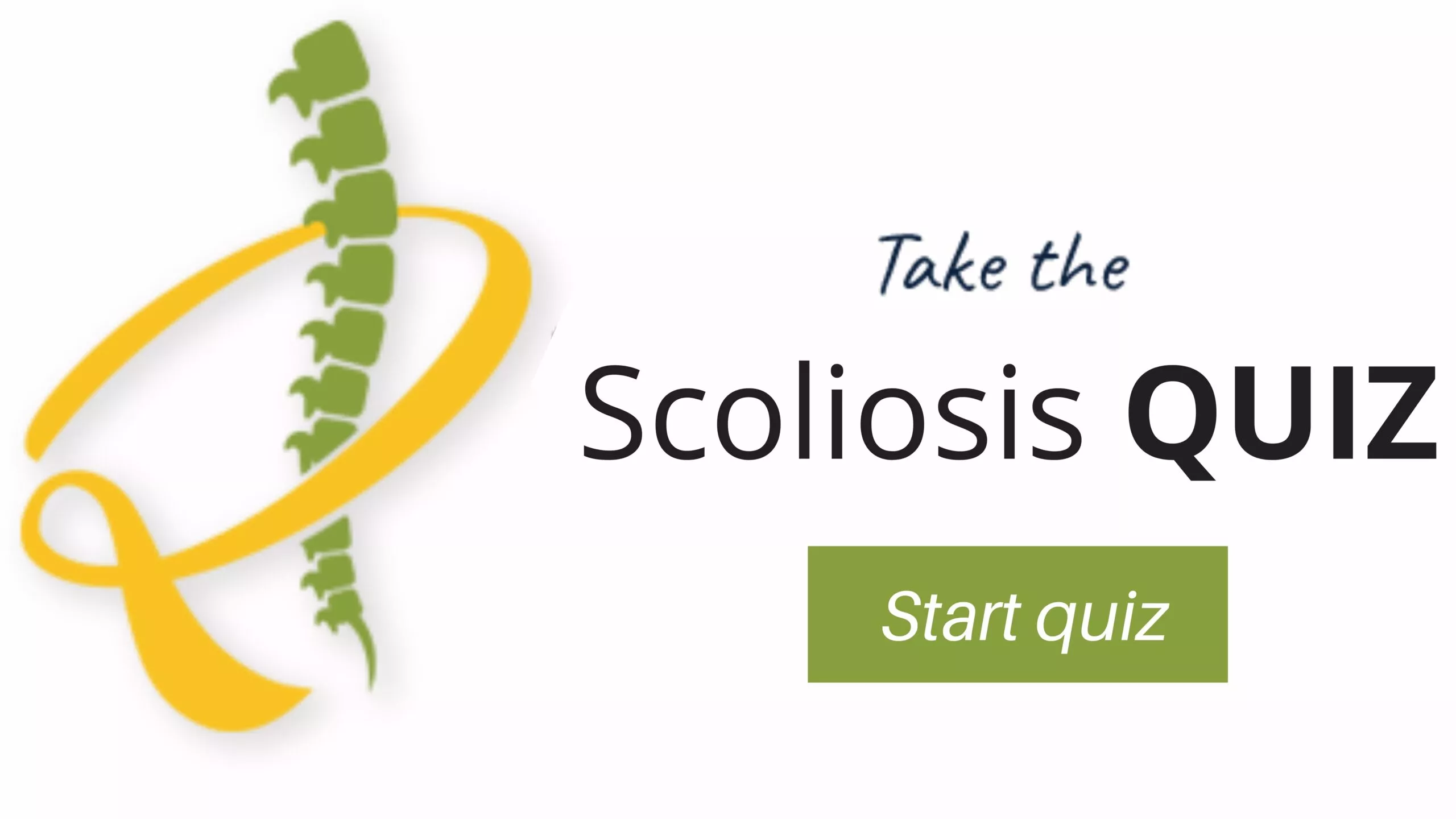
FACET JOINT SYNDROME
Doctors refer to Facet Joint Syndrome as an arthritis-like condition of the spine that can produce back and neck pain. Degeneration causes changes to the joints between the spine bones. The cartilage inside the facet joint can break down and become inflamed, triggering pain signals in nearby nerve endings.
3 percent of individuals with progressive curvature may eventually experience severe problems that can include scoliosis and back pain, spinal problems, and nerve compression causing numbness, weakness, and leg pain.
Facet Joint Syndrome
A joint connects two or more bones in your body and allows you to move. Facet joints are the joints that connect each of the vertebrae in your spine. Facet joints are also known as zygapophyseal or apophyseal joints, or your doctor may simply refer to them as facets. Each facet joint’s job, like any other joint in your body, provides healthy movement and, along with the intervertebral disc, provides stability for each motion segment. The disc serves as a spacer and supports movement between the vertebral bodies.
The intervertebral disc and the facet joint form a tripod relationship, and if one degenerates or gets damaged, it affects the other. Aging and/or traumatic injury can cause damage to the facet joints, and this constitutes the leading cause of back pain known as facet joint syndrome. Facet joints allow your back and neck to bend forward and backward, but they are also a common source of back pain. The facet joints in your lumbar spine (low back) are the most vulnerable to facet joint syndrome because they bear the most weight and are subject to the most strain. Facet joints in your cervical (neck) and thoracic (midback) spine, on the other hand, can cause chronic pain.
What Causes Facet Joint Syndrome?
The region of the spine affected determines the cause of facet joint syndrome Facet pain in the lower back, for example, the degenerative effects of aging cause facet joints to have problems. Facet joints, like knee and hip joints, are fluid-filled synovial joints. With years of strain and activity, the structures that support a spine, such as the intervertebral discs and facet joints, can wear down as you age. The intervertebral discs are primarily composed of water, and age-related degenerative changes affect disc hydration, resulting in a loss of disc height that separates the vertebral bodies, affecting normal facet joint alignment. Low back pain occurs with deterioration and misalignment.
As a result, facet joint syndrome frequently coexists with other degenerative spinal disorders such as degenerative disc disease, spondylolisthesis, and spondylosis (spinal osteoarthritis). Cervical and thoracic facet joint syndrome is less closely related to aging. A common cause of facet joint syndrome in the neck is trauma, such as whiplash from a car accident. While aging is the most common cause of lumbar spine facet joint pain, trauma from a sports injury or car accident can also cause chronic lower back joint pain. Spinal tumors rarely affect the facet joints and cause pain.
Questions and Answers.
What are the Symptoms of Facet Joint Syndrome
The symptoms of facet joint syndrome can vary from person to person, but some common signs include:
- Pain: The most prevalent symptom appears as localized pain in the affected area of the spine, typically worsened by activities such as bending, twisting, or prolonged standing or sitting.
- Stiffness: Individuals with facet joint syndrome often experience stiffness in the morning or after prolonged periods of inactivity, which may improve with movement.
- Reduced Range of Motion: Facet joint syndrome can lead to a decrease in spinal flexibility and limited range of motion.
- Radiating Pain: In some cases, pain may radiate from the affected facet joint into the surrounding muscles, causing discomfort in the buttocks, hips, or thighs.
- Muscle Spasms: Muscles around the affected facet joints may become tense and develop spasms in response to joint degeneration.
What is Facet joint Syndrome
Facet joint syndrome, also known as facet joint osteoarthritis, identifies as a condition characterized by degenerative changes in the facet joints of the spine. These joints, located on the posterior aspect of the vertebrae, facilitate movement and stability of the spine. Facet joint syndrome occurs when the cartilage within the joints wears down, leading to pain, stiffness, and limited mobility.
What are the Treatment Options for Facet Joint Syndrome
Treatment for facet joint syndrome aims to alleviate pain, improve function, and enhance the individual’s quality of life. Doctors follow the following approaches:
- Conservative Management: Our doctors look at non-surgical treatments as the first line of approach and may include over-the-counter pain medications, physical therapy, heat or cold therapy, exercises to improve flexibility and strength, and lifestyle modifications such as weight management and ergonomic adjustments.
- Facet Joint Injections: In cases where conservative measures provide limited relief, our doctors will recommend facet joint injections. These injections involve the targeted delivery of a local anesthetic and corticosteroid medication directly into the affected facet joint to reduce inflammation and alleviate pain.
- Radiofrequency Ablation: For individuals with more persistent pain, our doctors may recommend radiofrequency ablation (RFA). RFA involves the use of heat generated by radiofrequency waves to disrupt the sensory nerves supplying the affected facet joints, providing longer-term pain relief.
Common Signs and Symptoms of Facet Joint Pain
Facet joints are tiny joints that connect vertebral bones. They provide spine stability as well as mobility. Facet joints also aid in the development of bony openings through which spinal cord nerves pass the spinal column and travel to other parts of the body, such as the legs and arms.
Facet joints can become inflamed, irritated, or misaligned as a result of an injury or a medical condition such as spondylosis. Because these joints occur in the neck, upper back, and lower back, the signs and symptoms differ depending on the location of the irritated joints. The following describes the most common signs and symptoms of facet joint pain:
- Back stiffness (for example, a person may struggle to turn around while driving to look behind them).
- Pain at the affected facet joint—this pain can feel dull, achy, or even sharp with certain movements.
If swelling and inflammation near the facet joint become severe enough to compress a nearby spinal nerve, a person may experience pain, numbness, tingling, and weakness in an arm or leg.
Accurately Diagnosing Facet Joint Syndrome
The first step in diagnosing facet joint syndrome is to see a spine doctor. The doctor will ask a few questions about the patient’s pain, history of injury, and whether the problem worsens while sleeping or standing. Your doctor may then advise you to move or stand in positions that cause you pain. This enables your doctor to further understand the problem.
A diagnostic facet joint injection may allow your doctor to identify the cause of your pain. This injection contains a corticosteroid as well as a local anesthetic. Your doctor will use X-ray fluoroscopy to ensure that the needle is inserted correctly. You will return home after 20-30 minutes of direct observation. If your pain level decreases by more than 70%, your doctor will conclude that the source of the pain emanates from the facet joint
Facet Joint Pain Treatments
To begin, your doctor will recommend conservative therapies such as self-care, physical therapy, and medications. A wide range of nonsurgical treatments are available, and many are performed concurrently. The following describes Nonsurgical lumbar facet joint pain treatment:
- Heat therapy
- Actively engaging in low-impact exercises.
- Keeping active.
- Giving support for the lumbar curve.
- Making use of a cold pack.
- Using a brace for support.
Self-care
Keeping posture and keeping your spine in alignment are important things you can do to avoid pain as much as possible. This may necessitate a change in your daily standing, sitting, and sleeping habits. Doctors recommend losing weight as one of the most effective ways to reduce stress on facet joints and thus pain.
Therapy for the body
Exercise works effectively in treating facet joint syndrome and can help speed up the healing process, which may seem counterintuitive. Physical therapists can suggest proper lifting techniques as well as proper walking techniques. They will also work with you to strengthen and stretch the muscles in your lower back, legs, and stomach.
Exercises
The results you can expect from the strengthening and stretching exercises they show you, as with any suggested treatment, are directly proportional to your ability to follow them consistently. Pain in the facet joints can make it difficult to work, drive, sleep, or even get dressed in the morning. We strongly advise anyone suffering from facet joint pain or other symptoms to seek professional help from a spine doctor. There are also some exercises you can do on your own to help with daily pain relief while waiting for your doctor’s appointment. The following are some of the best exercises for facet joint pain:
Knee to the chest
Lie down on your back. Tighten your abdominal muscles gently and bring both knees to your chest. Hug your knees gently for 30 to 60 seconds, then relax. You can also try this exercise with only one leg.
Pelvic tilt to the back
Lay on your back, feet flat on the ground, knees bent. Tuck your bottom in and flatten your lower back against the ground. Rep 20 to 30 times more. This is excellent for improving core strength, which is critical for overall spine health!
Walking
Take your phone, a friend, or even your dog for a 10- to 20-minute walk around your neighborhood. Aerobic exercise can help you sleep better, reduce pain, and improve your mood.
Medications
Your doctor may prescribe oral anti-inflammatory medications or topical patches, creams, or salves. If muscle spasms become a problem, your doctor may prescribe muscle relaxants to help prevent them.
Joint injections with steroids
 Steroids can help reduce swelling and inflammation in the facet joint nerves. The minimally invasive procedure called a Facet Joint block injects corticosteroids and an analgesic-numbing agent into the painful joint. This can provide pain relief for several days to years. Steroid joint injections can help improve your condition when combined with physical therapy and exercise. The procedure can be repeated if necessary.
Steroids can help reduce swelling and inflammation in the facet joint nerves. The minimally invasive procedure called a Facet Joint block injects corticosteroids and an analgesic-numbing agent into the painful joint. This can provide pain relief for several days to years. Steroid joint injections can help improve your condition when combined with physical therapy and exercise. The procedure can be repeated if necessary.
Radiofrequency nerve ablation
If steroid joint injections do not provide long-term pain relief, this procedure, which begins with a diagnostic nerve block test will determine the nerves to treat. Following the completion of the nerve block test, an anesthetic gets injected along the nerve to “block” pain. If that part of the procedure becomes successful, your doctor will proceed with radiofrequency ablation to achieve longer-term pain relief.
The nerve ablation procedure is similar to that of a nerve block. Once the needle is in place to place the electrode, a radiofrequency current is used to destroy some of the medial branch nerve fibers in the joint that carry pain signals. This procedure typically relieves pain for 9 months to more than 2 years. It’s important to remember that there’s always the chance that the nerve will regrow through the burned lesion.
Surgery
The goal of facet syndrome surgery is to attain pain relief, stabilize the spine, and improve mobility. Facet syndrome requires immediate surgery only in extremely rare cases. If the neurosurgeons recommend surgery it is because conventional treatments have failed and the following symptoms still exist
- Difficulties in standing or walking
- Incapacitating Pain
Facet syndrome symptoms frequently mimic other medical conditions, so it is critical to see a highly trained team of spine specialists like those at the Southwest Scoliosis and Spine Institute where spine patients can get the best care and treatment available. Our specialists at the Weill Cornell Medicine Center for Comprehensive Spine Care have advanced training in diagnosing and treating spine conditions. They believe in treating back pain through an interdisciplinary approach that includes physiatry, pain management, physical therapy, and only when necessary – surgery.
Make an Appointment
The Southwest Scoliosis and Spine Institute doctors are well-versed in the options to treat Facet Joint Syndrome. Our doctors, surgeons, technicians, and staff specialize in complex spinal conditions and have been continually recognized for their excellence. We can see patients within 24 hours and so if you suffer from pain in your back, we invite you to call us for an appointment. For our patient’s convenience, our doctors see patients in our offices in Dallas, Plano, and Frisco, Texas. For your information, our board-certified, fellowship-trained surgeons have diagnosed and treated more than 100,000 patients. In addition, we have successfully performed more than 16,000 surgeries for scoliosis including complicated spine cases and revision surgeries.
We’re here to help STOP THE PAIN
If you are an adult living with scoliosis or have a child with this condition and need a doctor who specializes in orthopedic surgery,
call the Southwest Scoliosis and Spine Institute at 214-556-0555 to make an appointment today.


